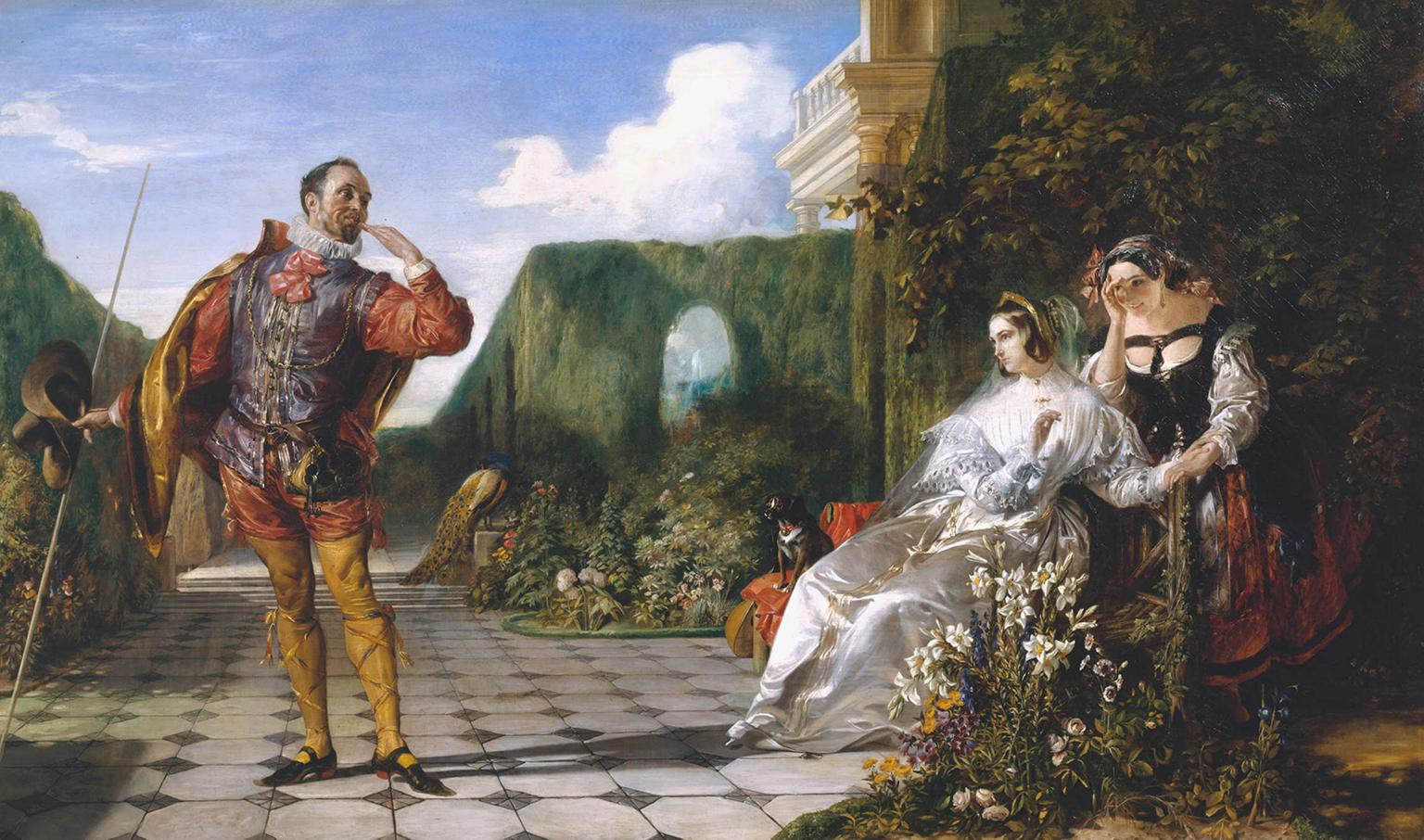This is an enormous oil painting by Irish artist Daniel Maclise depicting Vice Admiral Horatio Nelson's death during his victory at Trafalgar. The painting was created as a finished study for Maclise's even larger mural in the House of Lords. It is almost 1 m tall and 3.5 m wide! Maclise received the commission for two murals in the Royal Gallery in 1857 to depict The Meeting of Wellington and Blücher and The Death of Nelson. Maclise infused the surface with sodium silicate for the commission as he deemed ordinary frescoes would be too difficult. Unfortunately, the murals did not survive well, and by 1869 the colors were already fading. Modern critics, however, continue to praise "their serious and somber realism and their expressive power."
Fortunately, this large oil work retains its colors and detail. It shows the dying Admiral Nelson on the deck of HMS Victory, cradled in the arms of Captain Hardy, with other famous and recognizable figures leaning over him. They are surrounded by members of the crew, including, interestingly, at least two black sailors. Maclise took trouble over the accuracy of details in the picture, interviewing survivors of the battle and researching the naval equipment in use at the time. The black seaman in the center of the picture is particularly important as he directs the marines to Nelson's assassin on the French ship of the line, Redoutable. The representation of black sailors as well as women together with Lord Nelson depicts a Victorian society that was a harmonious whole, despite its class divisions and inequalities. At the time the painting was created, a quarter of seamen were black, and were fully integrated in British seagoing work and leisure life. Black seamen from West Africa, the West Indies, and the United States were a particularly common sight in Liverpool, where the painting resides.
Everywhere there are telling human depictions: an indomitable "powder monkey," as the young boys were called who dodged their way through the carnage and chaos, is bringing gunpowder to keep the cannons roaring. To the left of him, two sailors assist the young Lieutenant Westphal, who is badly wounded and fainting in their arms. Behind them, two sailors carry buckets of water up the companionway, to put out the fire on the Redoutable, and stop it from spreading to the Victory, which is close alongside. On the opposite, left-hand side of the painting, a group of sailors, one of them a grey-headed older man, are carrying away a severely-wounded shipmate for treatment. To the left of this group, two women attend a bleeding seaman. One holds a bowl of water, while the other sponges blood from his brow, and the ship's cook offers brandy.
Maclise was a painter whose talent and charm won him patrons and friends in the Irish and English intellectual and literary world. He initially trained in the Cork Institute of Arts and became involved in the revival of Irish culture. He launched his career as a portrait painter in Ireland after the success of his portrait of the novelist Sir Walter Scott, who visited Cork in 1825. Maclise moved to London in 1827 and entered the Royal Academy schools in 1828. As a student he supported himself first through portraiture and then as a subject painter. Much of Maclise's work was based on historical, literary, and Shakespearean themes and had a strong emphasis on gestures, expressions, and details. Later, his historical work became less concerned with realistic details and took on a grander and much more symbolic tone.
This vast, monumental depiction is entirely in the dress of the day, but in its inspiration and influences, it looks directly back to Renaissance and Baroque paintings and sculptures, so that Nelson's death seems less like a heroic celebration than a scene of martyrdom. The mood is essentially tragic, that of a ritual sacrifice.
Nelson really was quite the hero, having lost an eye and an arm in previous battles (accurately depicted in the painting), and refusing to discard his Admiral's coat, despite the fact that it made him an obvious target for the French snipers. He even had a long affair with the supermodel of his day, Lady Emma Hamilton. He truly earned his place atop Trafalgar Square with his victories over Napoleon's navy, retaining the British Empire's command of the seas for another two centuries.
- Clinton Pittman


 Daniel Maclise
Daniel Maclise